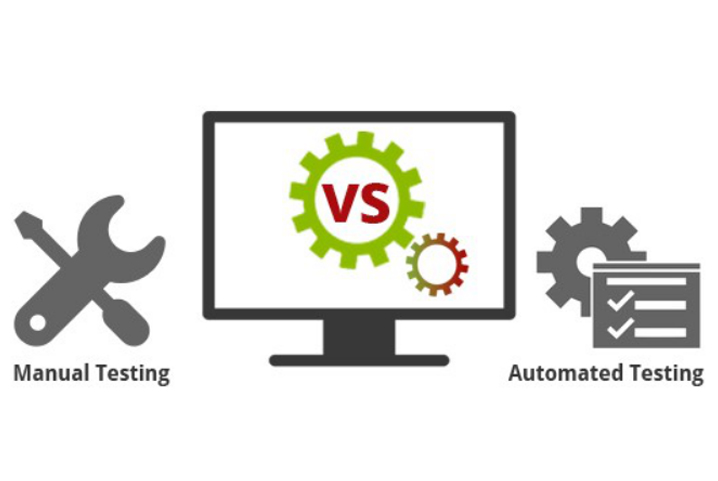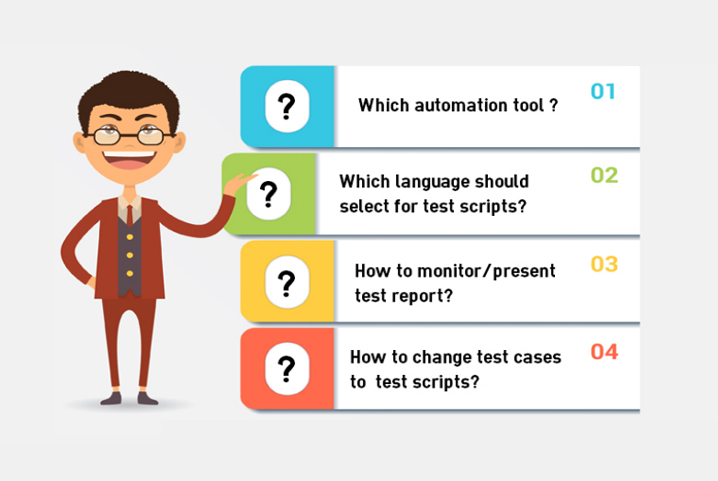“Quality is never an accident; it is always the result of an intelligent effort.”
These words may have been said more than a century ago, but they perfectly summarise the importance of testing in software product development. Creating a robust testing environment is essential to software quality assurance or SQA. Within its environment, testing is a product-focused corrective technique and involves reactive measures to eliminate multiple software bugs. The end goal of any testing environment is to make a product launch-ready by identifying, reporting and eliminating all existing set of bugs and errors.
While testing remains indispensable to product quality assurance, one debate that has in recent times gained substantial traction is that if the days of manual testing are over with the increased adoption of automated testing techniques in product development strategies. In this blog, we take a closer look at Automation Testing vs Manual Testing and the various pros and cons they offer to product development teams.
Automation Vs Manual Testing

Aside from what their names clearly suggest, both methods differ considerably from each other in terms of testing cost and time. Automation testing involves pre-scripts and automated tools/software for testing, and human intervention is limited to deciding what test cases to automate and selecting the right tools for testing.
On the other manual testing, environments are built solely around human beings, and all tests are performed sans any support from tools, scripts or software. Manual testing no doubt consumes a considerable amount of time and effort on the part of the testing team, but its role in modern application development cannot be undermined. For example, IoT and wearable applications still require field testing cementing the need for manual test environments in the modern technology landscape.
Automation Testing Pros and Cons
Creating an automated testing environment is both time-consuming and costly. However, considering the many benefits, including flexibility in handling large projects, incremental ROI and end-product value, automation testing is witnessing wide-scale adoption. Below we list some of the key benefits of automation testing environments:
- Run Tests 24*7:With a software-controlled test environment, it is easy to run detailed, repetitive, and data-intensive tests 24*7. Even if the testing team is done for the day, one can run and monitor test environments remotely.
- Reusability:There is no need to create new scripts each time a test has to be run. The test scripts can be run as many times as required irrespective of OS and devices. Further, a tester can even run a performance test on multiple devices using the same script.
- Reliable:Automation testing is immune to human errors. The test results are not only more reliable but also can be well documented for references and knowledge sharing.
- Cost-Effective:Barring the significant upfront costs, automation testing is exceedingly cost-effective in the long run. Bugs are identified at faster rates giving developers more time to fix them and save on technical debt stacks.

While the benefits are many, there are some disadvantages too:
The use of single test scripts for multiple tests runs no doubt eliminate human error, but any coding error at the time of the creation of these pre-scripts can snowball into undesirable consequences.
Debugging test scripts can be time-consuming and delay project development considerably. Furthermore, wrong selection of test tools can negatively impact development costs and time.
Manual Testing Pros and Cons
Though primitive, manual testing offers advantages over automation testing in areas like usability testing, ad-hoc testing, and exploratory testing. User experience is key to product success, and manual testing is the only way to measure product usability, user experience. Further, there are test cases that demand human intuitiveness and creativity. It is difficult and very costly to create test scripts with human cognitive skills which cement the need for a manual testing environment for such test cases.

However, manual testing environments are not ideal for large scale projects. They are time-consuming and derail the development speed significantly. Other than this, it is not possible to evaluate optimal performance levels using manual testing techniques.
Automation Vs Manual: Which One To Choose?
As already discussed, both automation and manual testing environment have their own set of advantages and disadvantages. The choice must be driven primarily by project needs and deadlines.
Automation testing is a preferred choice when the product has a very strong user base, requires frequent changes in code and deals with a voluminous amount of data. However, automation testing environment requires a fair bit of maintenance, test-script coding and selecting the right testing tools. Moreover, automation test scenario have to be manually tested at least once which manual testing can be a primitive practice but not an extinct one.
The benefits of an effective testing environment span far beyond new product development. Its importance in today’s competitive business environment has grown by manifold in recent years. Pratham, one of the top software development companies in India, offers a host of cost-effective and time-bound software and product testing services. Our experienced team of testers and environment managers has helped businesses deliver top quality products to their customers.
Please visit the link to know more.









